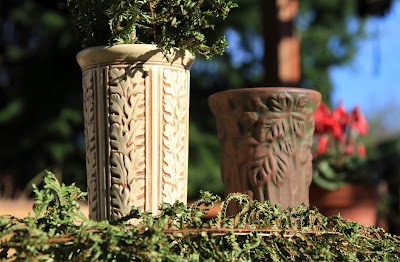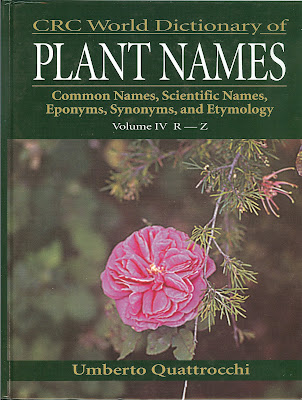
When we first saw the generic name
Scalesia we pronounced it as “Ska-LESS-ia”. After some rooting around on the web for another issue, we ran across this post from
BirderNaturalist about a Galápagos cruise. In the post, the author points out that
“Presumably Darwin was the first to collect species from this genus, as it was named by his good friend Joseph Dalton Hooker. And presumably Hooker named it after a Mr. Scales, as that -ia ending is added to a proper name in order to coin plant genera. (Fuchsia was named after Leonhart Fuchs, Poinsettia was named after Joel Roberts Poinsett, etc. I just haven't been able to find out who Scales was, as internet searches always turn up other uses of that common English word.) Keep this in mind when pronouncing "Scalesia," so as to keep the one-syllabled name Scales intact – please, not sca-LEE-sia, which sounds more like a disease or an obscure country north of the Caucasus.”
Point taken.
Joseph Dalton Hooker (1817 - 1911) read the paper
An Enumeration of the Plants of the Galapagos Archipelago; with Descriptions of those which are new on March 4
th, May 6
th, and December 16
th, 1845 and
On the Vegetation of the Galapagos Archipelago, as compared with that of some other Tropical Islands and of the Continent of America on December 1
st and 15
th, 1846. Both appear in
The Transactions of the Linnean Society of London, Volume XX.
Joseph Dalton Hooker’s Galápagos Papers


In the
An Enumeration… paper, Dalton states “The species of Scalesia form a very natural genus, and all those now to be described agree in every essential particular with the generic character, drawn up by Arnott from an examination of
S. atractyloides alone.” Arnott refers to
George Walker Arnott (1799 - 1868). While we are not 100% certain how this might have worked, it seems that Hooker deferred to an existing name, and that perhaps, Mr. Scales was a friend of Arnott?
Well, the idea that there might have been a Mr. Scales prompted us to dust off the William T. Stearn (1911 - 2011) classic
Botanical Latin, first published in 1966. In Chapter XX,
Formation of Names and Epithets in Latin, there is the section
Names Commemorating Persons that lists the
International Code for Botanical Nomenclature recommendations which include commemorating a person whose (sur)name ends in a consonant. In this case the letters
ia are added, except when the name ends in
er, when
a or
ia is added. Here’s are the relevant recommendations online:
20A.1 and
60B.1. Mr. Scales it just may be. But, we still think that the older, dead leaves do look like “scales” flattened against the trunk. Maybe someone didn’t follow the rules when naming the genus?
UPDATE 2012-03-28: A reader (see comments) has kindly pointed out that the generic name
Scalesia was meant to honor the Scottish botanist, William Alexander Stables (1810-1890) but the name got mangled. In a note in the Archives of Natural History the sleuthing that uncovered the etymological blunder is
revealed. Thanks Anonymous.
Scalesia Binomen Art at Campo Duro
t

We are not exactly sure of the particular
Scalesia shown here. Our guide claimed it was
S. gordilloi, but we doubt that since that species seems to be found only on San Cristóbal Island, Galápagos. By the leaf alone, it looks more like
S. cordata which is present on Isabela and is where this photograph was taken. This stand of
Scalesia was photographed at Campo Duro in the Isabela highlands (lat -0.8723, long -91.0150 or 0d 52’ 20’’ S, 91d 0’ 54” W). The name was spelled with dried leaves found on the ground. The same guide said that some dried
Scalesia leaves were used like tobacco.
Scalesia is part of the Asteraceae family and is endemic to the Galápagos Islands. The arborescent behavior - or tree-like behavior - is rare in the Asteraceae family. The species of
Scalesia in the Galápagos Islands can be big flower trees!
Scalesia are referred to as the Darwin’s finches of the plant world because they demonstrate the process of
adaptive radiation. In short, adaptive radiation is the evolution of many species form a common ancestor. More specifically, adaptive radiation is a consequence of
alliopatric speciation or geographical speciation.
Speciation is the process by which a new species arise.
A species is a biological classification that refers to a group of organisms capable of interbreeding and producing fertile offspring (the main criteria). When a splinter-population of a species gets separated from the main (parental) population so they cannot interbreed anymore with the main population then the splinter population can give rise to a new species. In the case of
Scalesia, you can think of seeds that floated, hitched a ride on a bird, or otherwise made their way to Galápagos Islands a few million years ago. In the new niche, the daisies evolved from a single or a few ancestors to fill the island niches, including moist uplands and arid lowlands. It’s unclear to us why in the moist uplands the
Scalesia grow so tall. Is it because of the need to compete for light and/or gather the garúa mist and critical moisture during the dry season?
In Jackson’s
Galápagos: A Natural History (Chapter 3) there is a good overview of evolution in the Galápagos. The splinter populations (or colonizing populations as he refers to them) that arrive are not usually a representative selection of the parent population, an effect referred to as the “founder effect”. Therefore, the colonizing population is different right from the start. Also, the colonizing population doesn’t have the inertia of the larger parent population to change and is subject to “genetic drift” which means that significant change can happen in just a few generations. And finally, when you think about it, if the colonizers are good long-distance colonizers, like mangrove, then it’s not likely that a new species will form in the new environment. Rather, it’s the plants and animals at the edge of their dispersal capability that give rise to the new races or species. So the daisy family gave rise to a new genus,
Scalesia, and the mangroves didn’t.
Collecting Dry Scalesia Leaves to Spell Out the Generic Name and the Leaves Up Close





















































